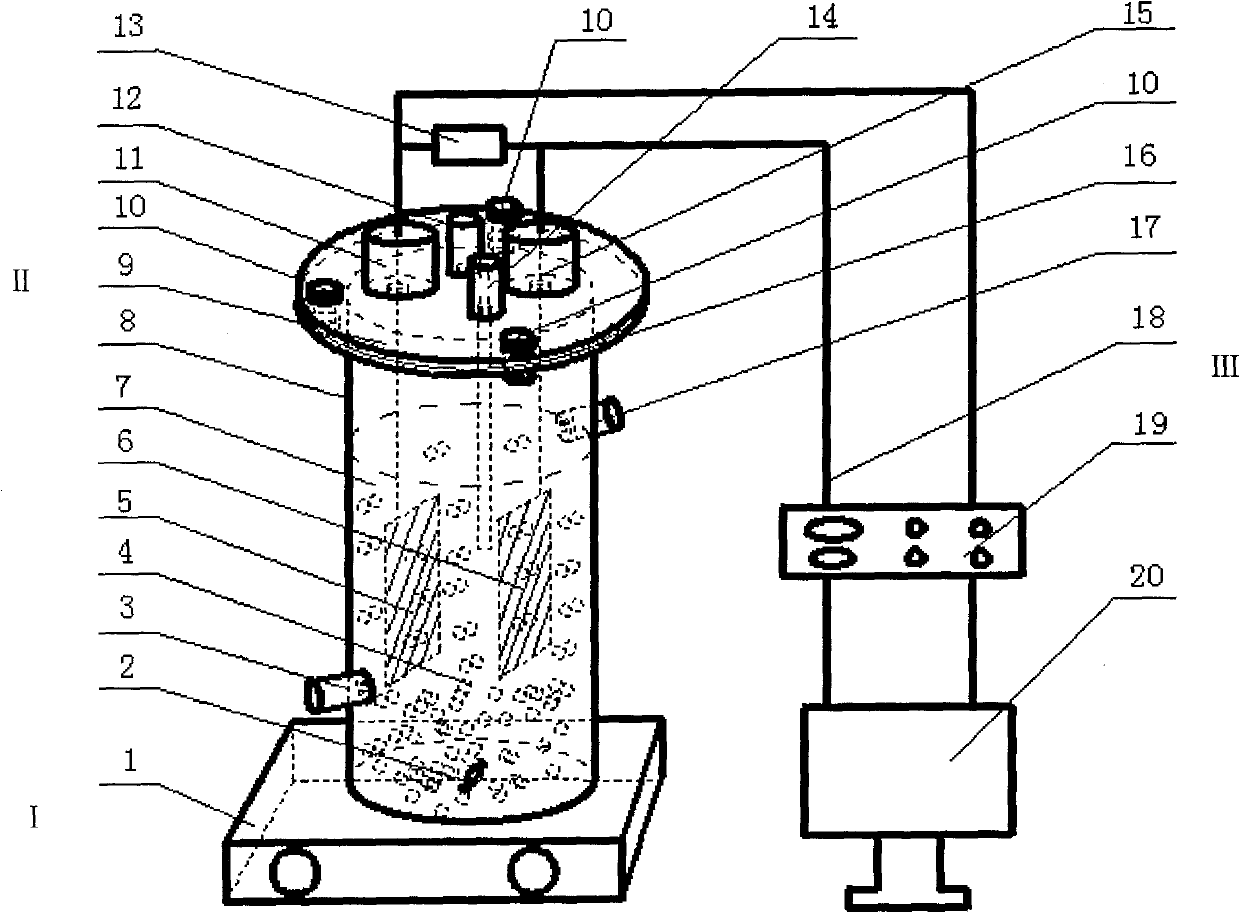Anaerobic ammonia oxidation microbiological fuel cell
A technology of anammox and anammox bacteria, applied in the field of anaerobic ammonium oxidation microbial fuel cells, can solve the problems of weakening microbial activity and electron transfer ability, low conductivity, high cost, etc., and achieve easy scale-up and industrial application , Simple device structure, good battery performance
- Summary
- Abstract
- Description
- Claims
- Application Information
AI Technical Summary
Problems solved by technology
Method used
Image
Examples
Embodiment Construction
[0014] As shown in the accompanying drawings, the anammox microbial fuel cell consists of three parts: a constant temperature stirring system I, a reaction system II and a data acquisition and monitoring system III. The constant temperature stirring system I is provided with a constant temperature magnetic stirrer body 1 and a magnetic stirrer 2; The reaction system II is provided with a cylindrical reactor body 8 and a sealing cover 9. The lower part of the cylindrical reactor body 8 is provided with a water inlet pipe 3, and the upper part of the cylindrical reactor body 8 is provided with a water outlet pipe 17. There is an electricity-generating substrate 7, in which free anammox bacteria 4 and a film-hanging anode 5 and a film-hanging cathode 6 attached to the anammox bacteria are immersed, and the upper part of the sealing cover 9 is provided with an anode wire fixing tube 11, Cathode wire fixing tube 15, sampling tube 12 and reference electrode fixing tube 14, a sealing ...
PUM
 Login to View More
Login to View More Abstract
Description
Claims
Application Information
 Login to View More
Login to View More - R&D
- Intellectual Property
- Life Sciences
- Materials
- Tech Scout
- Unparalleled Data Quality
- Higher Quality Content
- 60% Fewer Hallucinations
Browse by: Latest US Patents, China's latest patents, Technical Efficacy Thesaurus, Application Domain, Technology Topic, Popular Technical Reports.
© 2025 PatSnap. All rights reserved.Legal|Privacy policy|Modern Slavery Act Transparency Statement|Sitemap|About US| Contact US: help@patsnap.com



